Don’t Blame Your Elbow: Check Your Shoulders!
Jan 17, 2017Elbow pain can be one of the most irritating and inconvenient issues. I once had a patient say that the most painful part of his day was just cutting butter for his toast in the morning.
Classically, we tend to blame the tissues at the joint—wrist extensors/flexors. Sure, the common insertion for these muscles becomes inflamed, but what causes that? I like to view the elbow similarly to the knee; it is a joint that is pushed and pulled on either side by very complex joints. The shoulders will largely influence the biomechanics of your elbow and the amount of torque that passes through the joint.
Although somewhat simplified, we could group you as either tight and immobile or mobile and bendy. Each characteristic has its own pros and cons, but the cons are where pain manifests. With decreased shoulder mobility and/or control, the elbow will take the brunt of the force when lifting weights or swinging a racquet. Shoulder stabilization and control are important for correct biomechanics of the shoulder girdle and upper extremity. Lack of control upstream, allows more movement downstream at the elbow. The repetitive, small insults at the elbow joint will eventually result in elbow pain.
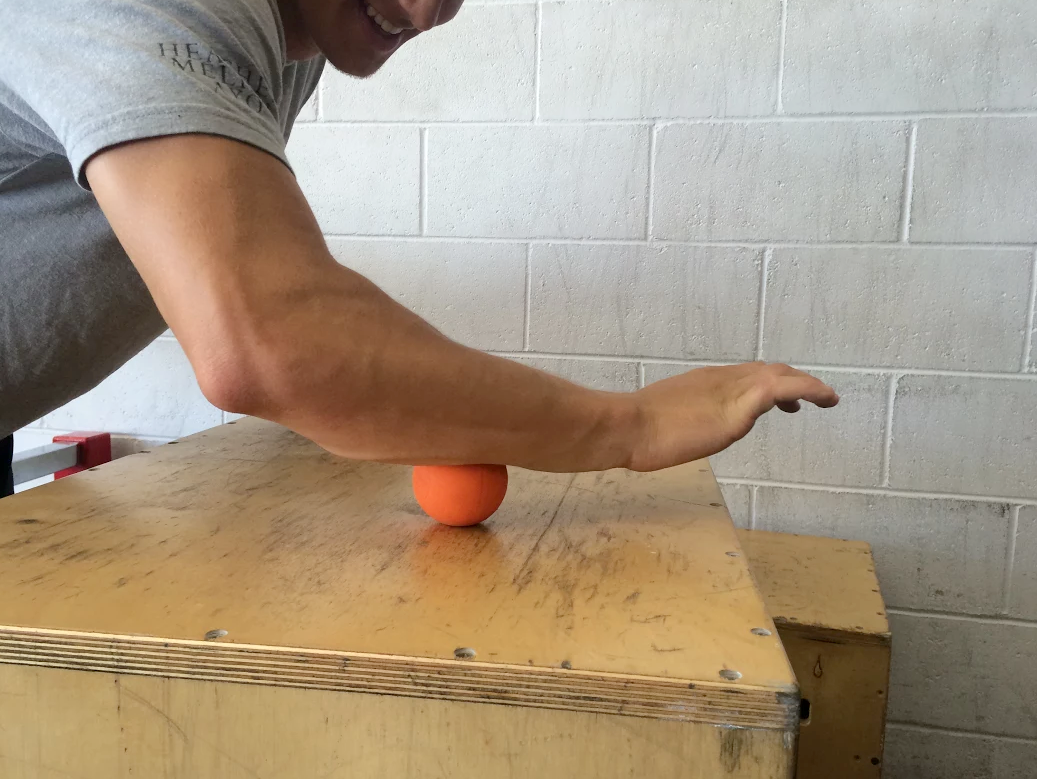
Hammering away at the soft tissue around the elbow is often where athletes start when self-treating. Don’t get me wrong, a little forearm smash with a lacrosse ball or barbell is great. But if it does not improve your problems, move on! In this case, we are going to check out the shoulder.
Less mobile folks: To decrease the torque at the elbow, it would be ideal to improve both the external rotation (front rack) and flexion (overhead position) or your shoulder. Tight lats can often be the cause of the restrictions. Try these two mobility pieces:
- Supinated (palms up) hang on pull up bar- band around my upper arm is to increase external rotation when I move my hands apart. Be sure to ease into this one! Begin with hands slightly closer and ease your body down. Keep your feet on the floor to control the amount of body weight through the arms. Ideally, you will have your head between your arms, torso and pelvis straight beneath you and pelvis tucked under. This will help with the front rack and overhead lift for weightlifters; athletes this will also help you overhead with throwing/swinging.
- Overhead distraction- stretching same leg back and across to take up slack in the tissues on the side of the body. Try to keep the palm up and feel free to move the torso a bit to feel a stretch in different areas.
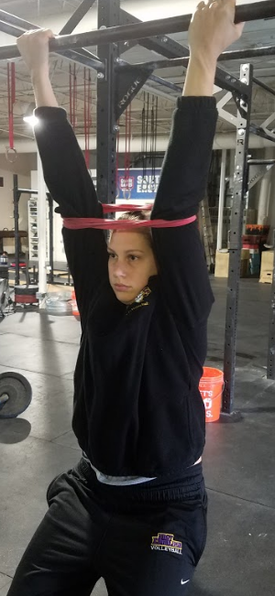
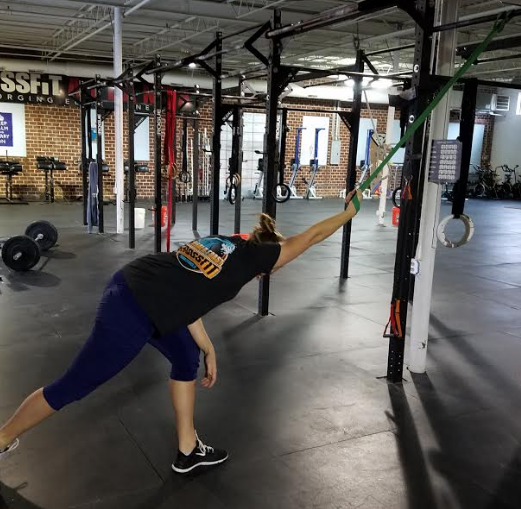
More mobile folks: Shoulder stabilization is going to be the key for you. A simple way to start on this is kettlebell carries, all variations! Here are two simple, yet effective stabilization drills:
- Heavy farmer’s carry- simply holding a relatively heavy kettlebell in one hand. Avoid leaning far to one side and allowing the kettlebell to rest on your leg. Keep it slightly spaced. Choose a distance and incorporate into warm ups or go until fatigue- grip gives out or form falters.
- Waiter’s carry- arm and shoulder in 90/90. As you get tired, your elbow will tend to drift outward or down so stay aware of the position. We like to perform these as a bottoms up carry, so the bottom of the bell remains facing the ceiling throughout. Go until form fatigue!
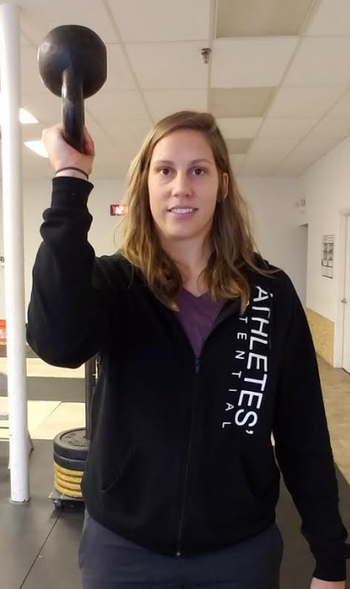
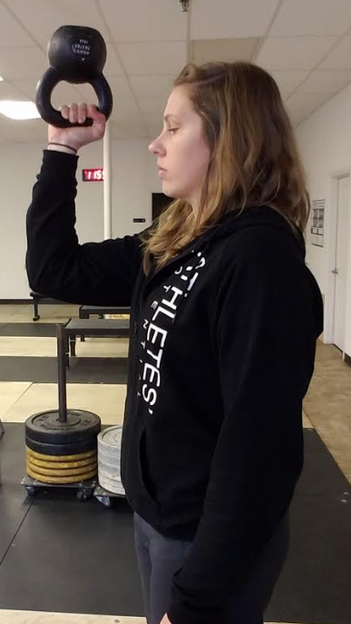
As always, do a movement screen/ form check first. Get a coach or super friend to watch you move and see if they notice any faults. Racquet sport athletes—if you constantly have elbow pain, check your grip size. Grips too small or too large can cause elbow issues as well. If you are a desk jockey, check out your work station and the ergonomics!
Try these mobility exercises and tips out. If you continue to have issues, come see us at Athletes’ Potential. We see elbow pain often and are able to effectively treat it with an evaluation! Keep devoting time to making your body work and feel better.
Thanks,
Dr. Jackie, PT, DPT, OCS, CSCS
Let us help you figure out to live your best active life today!
Remember, Movement is Medicine!

